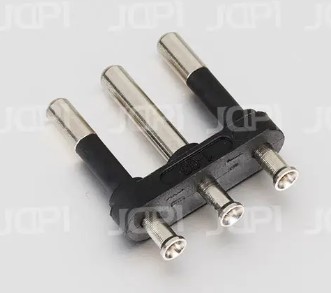Italian plug inserts, also known as Type L plugs, have been a standard feature of electrical installations in Italy and certain other regions for many years. However, when it comes to adaptability to modern electrical standards and technologies, Italian plug inserts face some challenges due to their unique design and characteristics.
Type L plugs are characterized by their three round pins arranged in a row, with the central pin being slightly larger and longer than the two outer pins. While this design has served Italy well for decades, it presents limitations when it comes to compatibility with modern electrical standards and technologies that are increasingly moving towards standardized designs and features.
One challenge with Italian plug inserts is their limited compatibility with international electrical standards. Unlike some other plug types, such as the widely used Type C (Europlug) or Type F (Schuko) plugs, Italian Type L plugs are not as universally compatible with outlets in other countries. This can be inconvenient for travelers or individuals who need to use electrical devices across different regions with varying plug standards.
Furthermore, Italian plug inserts may not be as well-suited for certain modern electrical devices and technologies that require advanced features or specialized connections. For example, many modern electronics, including laptops, smartphones, and tablets, are designed to be charged using USB cables or other standardized connectors rather than traditional power plugs. While adapters are available to convert Type L plugs to USB or other connectors, this adds an extra layer of complexity and may not always provide seamless compatibility.
Another consideration is the safety and efficiency of Italian plug inserts in the context of modern electrical systems. While Type L plugs are designed to meet safety standards in Italy, they may not always offer the same level of protection or reliability as newer plug designs that incorporate advanced safety features such as grounding pins or built-in surge protection. In addition, the round pin configuration of Italian plugs may not provide as secure or stable a connection as other plug types, potentially leading to issues such as loose connections or electrical hazards.
Despite these challenges, Italian plug inserts can still be adapted to modern electrical standards and technologies with the use of adapters, converters, or specialized connectors. For example, travelers or individuals living in regions with different plug standards can use plug adapters to convert Type L plugs to the local standard, allowing Italian devices to be used with local electrical outlets. Similarly, adapters or converters are available to convert Type L plugs to other plug types or connector formats, providing compatibility with a wider range of devices and technologies.
While Italian plug inserts may face challenges when it comes to adaptability to modern electrical standards and technologies, they can still be used effectively with the right adapters or converters. However, as electrical systems continue to evolve and become more standardized, there may be a growing need for Italy and other regions using Type L plugs to consider updating their electrical infrastructure to better align with international standards and technologies.



 English
English Deutsch
Deutsch













